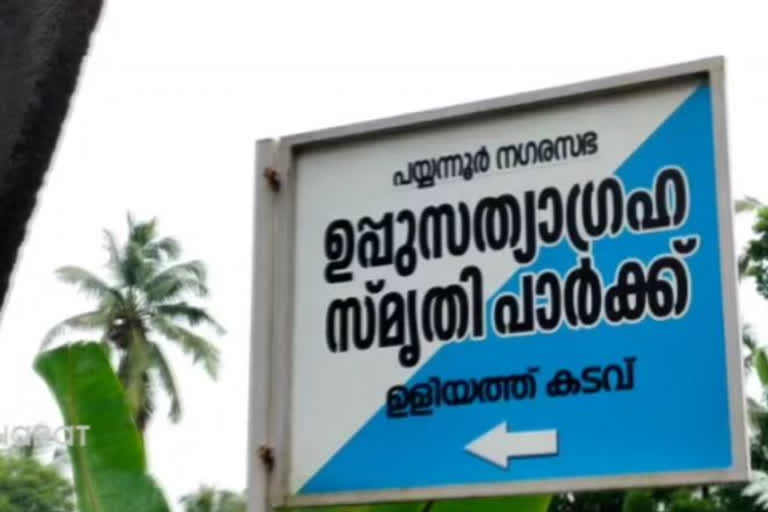Kannur: "With this handful of salt, I will shake the foundation of British Empire," Mahatma Gandhi said this on 6 April 1930 at the Dandi beach in Gujarat. AND HE DID IT. Gandhiji started the Salt Satyagraha March on March 12, 1930, as part of the Civil Disobedience Movement, which was welcomed by Indians across the country with open arms.
At the call of Mahatma Gandhi, Kerala also took part in the Salt Satyagraha which was meant to oppose the salt tax imposed by the British. Salt was monopolised in British India by the Salt Act of 1882. Gandhiji's goal was to break this monopoly and make salt affordable for all.
C. Krishnan Nair, Titus, Raghav Pothuval, Shankarji and Tapan Nair took part in the Salt Protest along with Gandhiji. The Salt Satyagraha centres in Kerala were Payyanur in Kannur and Beypore in Kozhikode.
The protest at Uliyath Kadavu, a remote place in Payyanur made it to history. It was led by K. Kelappan, who is well-known by his nickname, Kerala Gandhi. Meanwhile, Muhammad Abdurahman led the Salt Satyagraha in Beypore.
Payyanur creates history
In Payyanur, the salt preparation protest against the British occupation took place at Uliyath Kadavu. The strike was led by K. Kelappan, Moyarath Sankara Menon and C.H. Govindan Nambiar. A Congress meeting held at Vadakara on March 9, 1930, gave permission for this. K Kelappan was the leader and K.T. Kunjiraman Nambiar was the captain in the 32 member procession which started from Kozhikode.
The procession started On April 13, 1930, with an anti-British anthem 'Vazhka Bharatasamudayam' sung by Krishna Pillai which received thunderous applause. Moyarath Kunji Sankara Menon, P. Kumaran and C.H. Govindan arranged a reception on the way. The procession reached Payyanur on April 21. The next day the procession reached Uliyath Kadavu. Amid chanting slogans and national anthems, the freedom fighters broke the law by preparing salt.
Outraged, the British raided the Satyagraha camp in Payyanur and beat up the supporters. Leaders, including K. Kelappan, were arrested and jailed by the police. This excited the people and thousands of people got ready to take part in the freedom struggle. There were widespread protests in Kannur, Thalassery and other parts of the district. Several Congress activists were arrested.
Uliyath Kadavu now cries for recognition
The 90th anniversary of the Salt Satyagraha was celebrated last year. Still, the legendary historical site of Uliyath Kadavu has now become a hideout for anti-social elements.
The historical records of the Salt Satyagraha are kept in the Payyannur Gandhi Smriti Museum. The Gandhi Museum also has documents containing the names and other details of those who took part in the agitation and a copy of the FIR prepared by the police.
The old Payyannur police station, where the protesters were beaten-up, has been turned into a Gandhi Museum. The freedom fighters and the locals demanded that the authorities should protect the historic land of Uliyath Kadavu.
Uliyath Kadavu-Payyanur incident became a turning point in the history of the freedom struggle. Kerala owes this remote land for its glory in the Independence Movement.
Also Read: 75 Years of Independence: Harda sisters preserve silver tray auctioned by Gandhi



